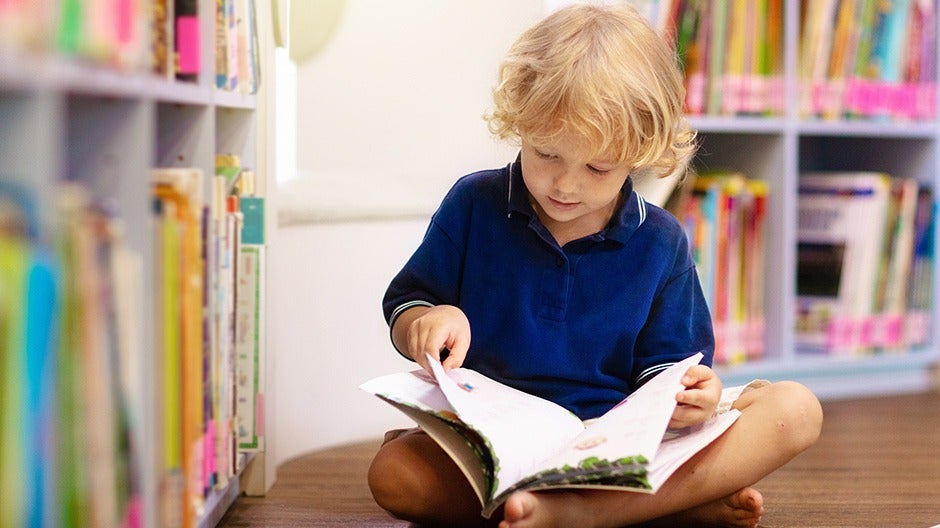It can be challenging to find the right activities for 5-year-olds. It was easier when they were younger, wasn’t it? All you needed to do was place a colorful, fluffy, or musical toy in front of them, and they would be completely fascinated by the object for a long time.
But things have changed. Over the past few years, your 5-year-old has seen so much physical, mental, emotional, and social growth and development, and simple toys don’t cut it anymore.
To help your child continue learning and developing at a healthy rate, it’s essential to find relevant activities for their age. But where do you start?
Look no further! Begin knows a thing or two about creative activities for kids. In this article, we’ll share some fun and engaging games your 5-year-old will fall in love with while learning.
Importance Of Learning Activities For 5-Year-Olds

Learning activities play an important role in early childhood development. However, when parents come across this information, they often assume they need to create the most elaborate games to help maximize learning. That’s not the case.
For example, simple games and activities such as painting or playing house help develop language and emotional skills, creativity, and fine motor skills, among other things.
Also, when children engage in physical activities such as running, jumping, or skipping, it contributes to their gross motor development.
In addition, if an activity is challenging (think tricky puzzles or building a tall lego tower), it helps children learn how to follow through on a project and problem-solve. Ultimately, this helps build confidence and gives children a sense of ownership and accomplishment.
Learning activities for 5-year-olds are also great to help beat boredom. A child who has nothing to do for the day can often become irritable or display disruptive behavior. That’s not ideal for them (or you!), so it’s important to have some go-to activities at the ready.
Finding the right activities for your child is one way you can foster their continued growth and development. So where do you start?
Questions To Ask Before Choosing Activities
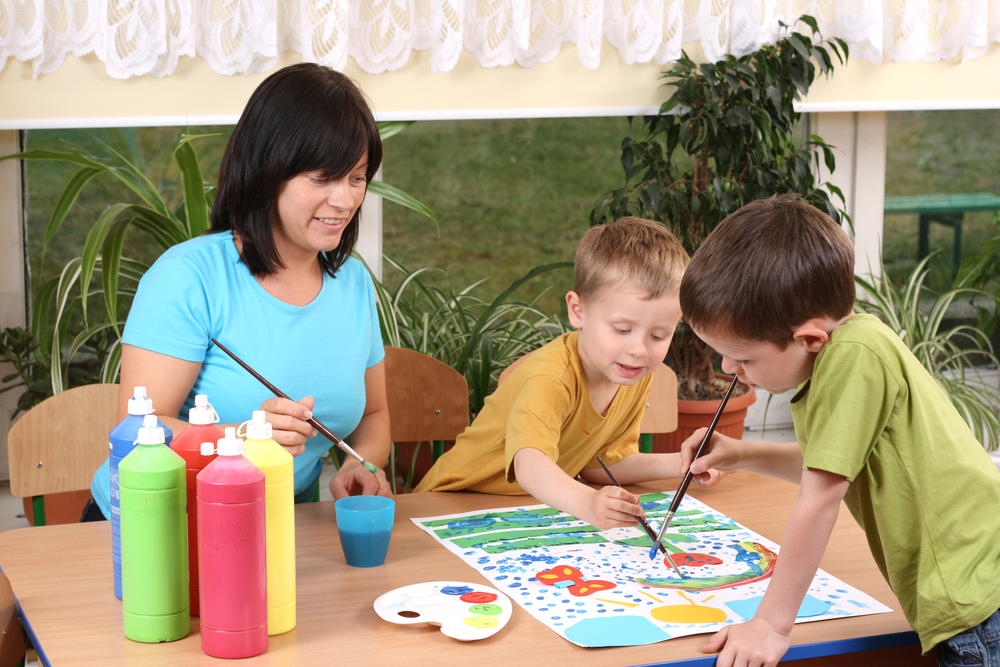
Now that you understand the importance of activities for 5-year-olds, here are a few questions to ask yourself to ensure you’re choosing the right ones for your child.
What Will My Child Learn From This Activity?
There are many developmental milestones that are essential for your child to reach — from physical to mental, emotional, and social.
This is why it’s important to incorporate a variety of activities into your child’s play, rather than choosing similar games that help develop the same skills.
Are The Instructions Easy To Understand?
As children get older, the activities and games we introduce them to will naturally become more complex.
While it’s beneficial to keep challenging our children so they learn to think creatively and problem-solve, it’s equally important to not overwhelm them with games that are simply too complicated for their age group.
Will The Activity Engage My Child’s Senses?
From the moment they are born, our children are seeing, touching, tasting, hearing, and smelling the world around them.
Children use their senses to explore and understand things, so we encourage sensory play in early childhood because it plays a significant role in developing many essential language and cognitive development skills. It also helps children continue exploring and engaging.
7 Fun Activities For 5-year-olds
1) Letter Toss
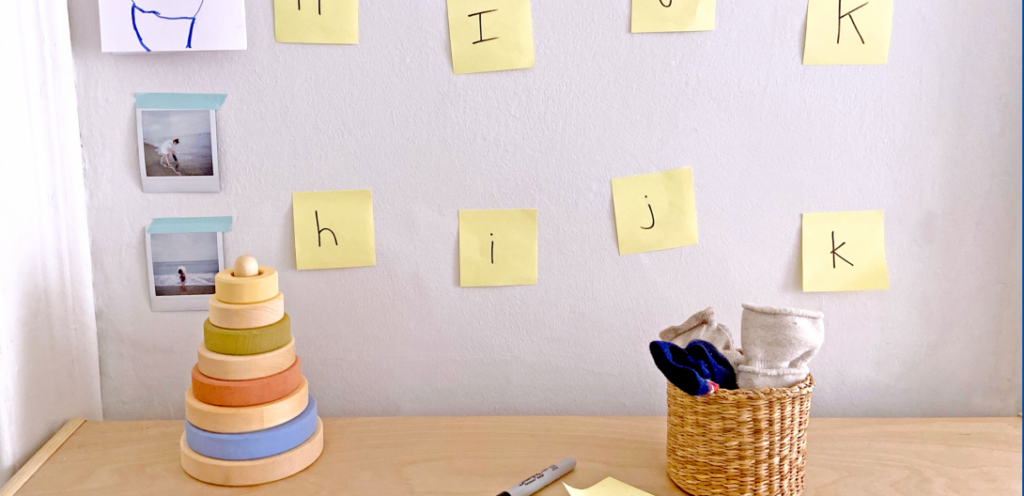
What You’ll Need:
- Post-its
- Marker
- Rolled-up sock or small beanbag
What To Do:
We love letter toss because it only requires about 10 minutes of set-up time, making it the perfect game to incorporate when you’ve had a busy day or week.
Start by writing uppercase and lowercase letters on individual Post-its (one per page). Then stick the Post-its onto the floor or playroom wall, making sure that there’s space between each one.
Next, have your child stand a few feet away and toss the rolled-up sock at the Post-it notes as you call them out.
Optional:
You can also pick letters in a word and arrange them in random order. In this version, your child will need to hit the letters in their correct order to spell the word. (You can write the word on a piece of paper for them to have a reference if needed.)
This is a fun and engaging activity to help children practice their alphabet and spelling. All the aiming and throwing is also a great way to help them continue developing their gross motor skills.
2) Cupcake Tin Counting Game
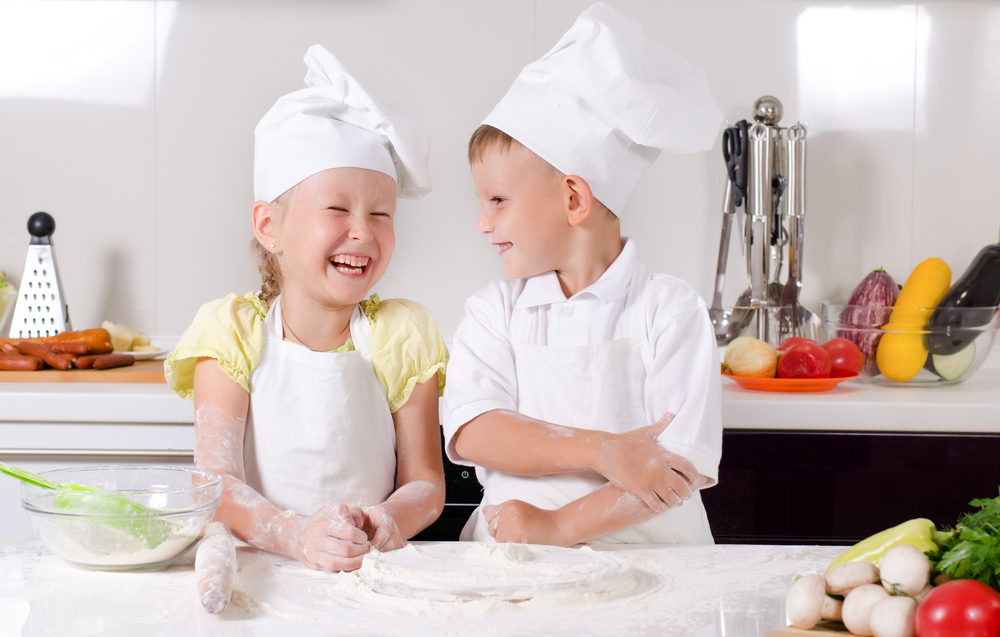
What You’ll Need:
- Cupcake tin
- Cupcake liners
- Marker
- A snack with small pieces (e.g., cereal, puffs, blueberries, etc.)
What To Do:
In a nutshell, this activity involves having your child fill each numbered cupcake liner with the corresponding number of snack pieces. For more information on how to play cupcake tin counting, you can check out this link.
This simple activity is excellent for helping children develop their understanding of counting principles (and is a fun way to enjoy some delicious treats at the end!).
3) Create A Storytelling Map
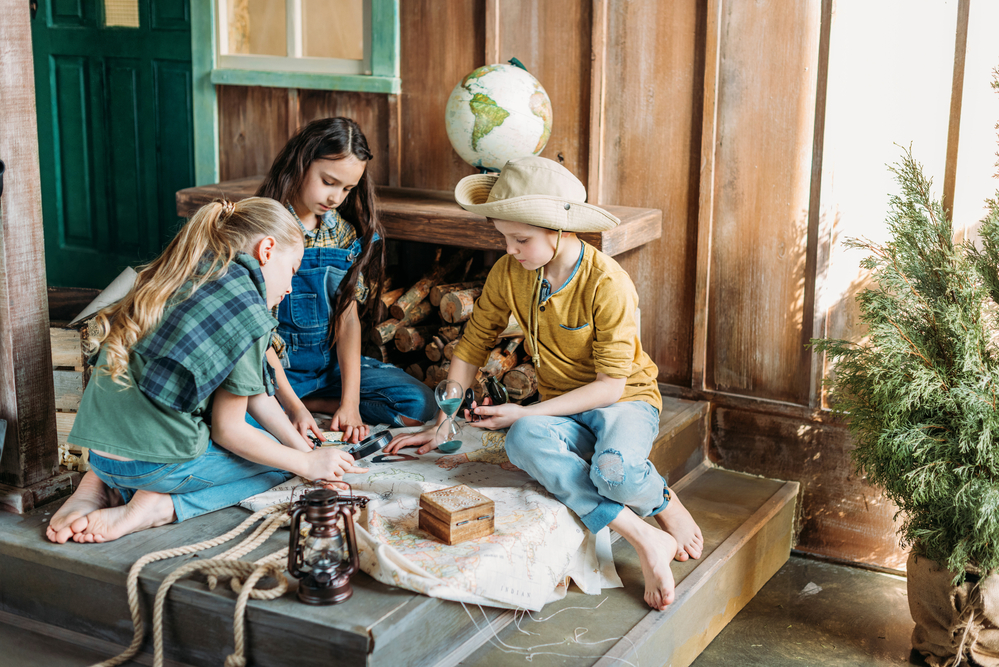
What You’ll Need:
- A huge piece of craft or butcher paper
- Marker
- Crayons
What To Do:
The aim of this activity is simple: Create a giant storytelling map using a marker, crayons, and craft or butcher paper. (You can even take this activity outside and use your backyard layout as a guide for the map.)
Encourage your child to use their creativity and come up with their own ideas for this invented world. The map might lead to a magic castle, a haunted house, or even a mystical forest. Let their imagination run wild!
If you have multiple children, this is an excellent game for sibling or all-family play. And if you do take the activity outside, there’s the added benefit of sunshine and fresh air.
4) Draw To Music

What You’ll Need:
- Papers
- Markers, crayons, colored pencils, watercolor paints, etc.
- Classical music playing in the background
What To Do:
Music — you listen to it, of course, but have you considered making drawings to match what you hear?
This is a simple but wonderful activity for many children. All you need is drawing and painting materials and, of course, music.
As the music plays in the background, encourage your child to draw or paint anything they want. To help them get started, you can ask questions like, “How does the music make you feel? What does it remind you of?”
This is one of those activities where the journey is much more important than the destination. It really doesn’t matter if the colors they choose clash or the lines are too harsh. We’re not talking about creating a Picasso here but, rather, engaging the senses with this experience.
Treat this activity as a great sensory (auditory and visual) learning opportunity that your child can enjoy for some uninterrupted quiet time.
5) HOMER Character Cut-Outs
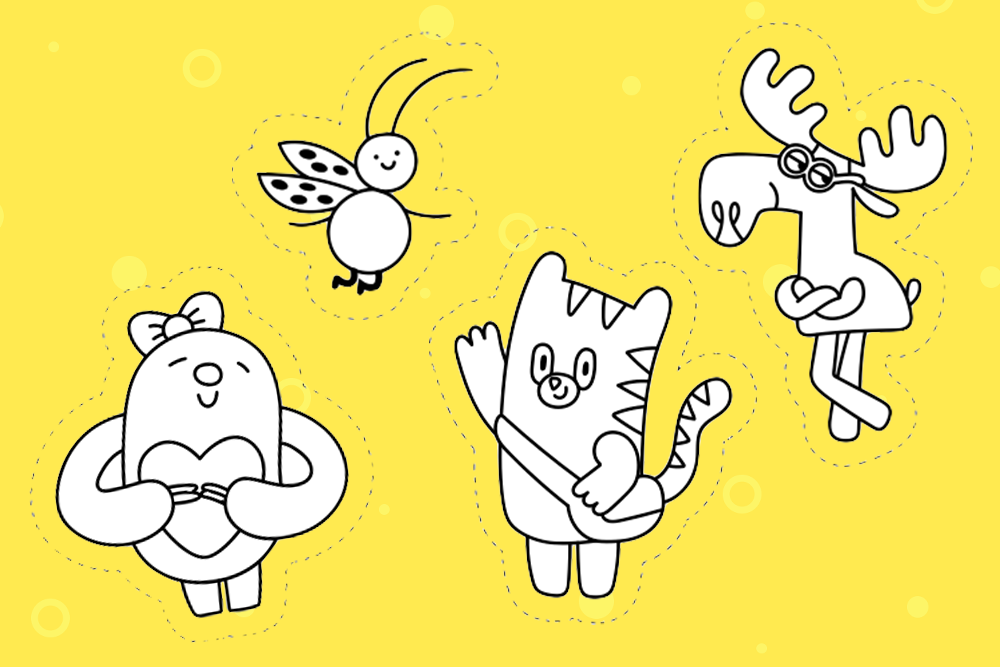
What You’ll Need:
- This printable from HOMER
- Crayons or markers
- Scissors
- Glue
- Cardboard or cardstock
- Popsicle sticks (optional)
What To Do:
Start this activity by encouraging your child to color the characters. Once they’ve colored them how they’d like, have them cut the characters’ shapes out. Next, help your child glue the characters onto cardboard or cardstock.
Voila! It’s time to play!
This is a great way to encourage imaginative play, as your child can bring the characters to life (and even create a play). This really helps encourage creativity!
For some inspiration, check out this link.
6) Create A Rainbow Suncatcher
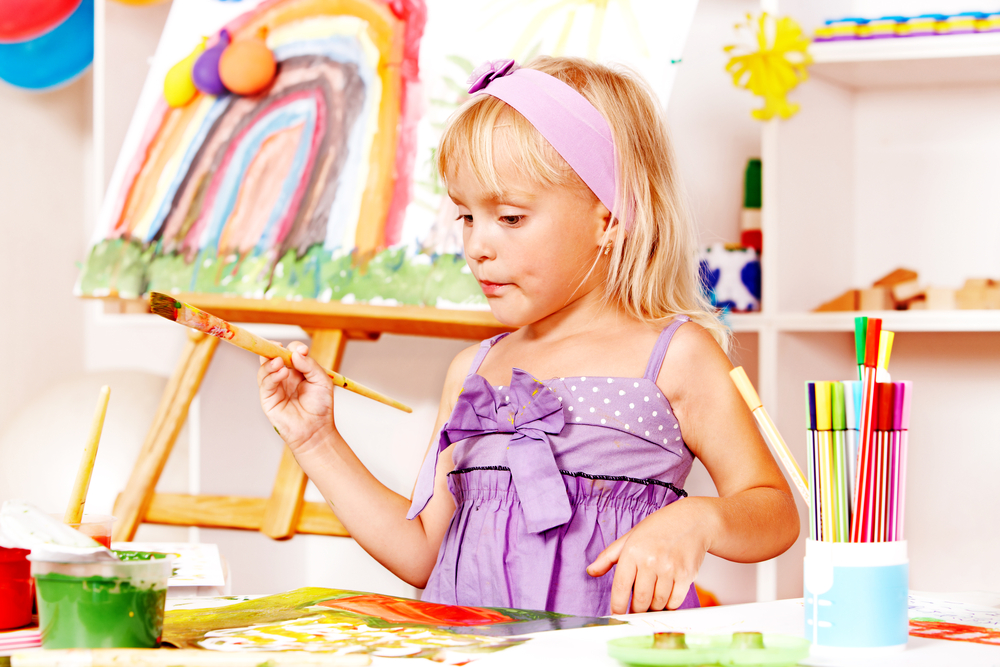
What You’ll Need:
- Colored gift tissue paper
- Cotton balls
- Scissors
- Clear tape
- Wax paper
- Clear-drying school glue
What To Do:
Begin with cutting the colored tissue paper into squares. Then make the rainbow shape by drawing six lines on the wax paper with your glue.
Next, encourage your child to glue down the tissue paper onto each line in rainbow color order (you can hand your child a picture of the rainbow as a guide). Lastly, add cotton balls below the rainbow to represent clouds.
This is a great activity to teach your child the colors of the rainbow and to continue developing their fine motor skills.
7) Make An Ocean
What You’ll Need:
- Medium bin or deep tray
- Dried pasta for coral
- Paint
- Play-Doh
- Water
- Scoops of cups for playing in the water
- Ocean creature toys and loose parts like pebbles, shells, and starfish
- Blue food coloring (optional)
What To Do:
For detailed instructions on creating your very own ocean, check out this link to our Ocean Sensory Bin.
After finishing the creation with your child, encourage them to touch and feel all the interesting ocean creatures. This is a great sensory activity to help children explore and investigate some of the amazing fish found in our seas.
Have Fun At Home With Activities For 5-Year-Olds

We hope one thing’s clear from our above list of activities for 5-year-olds — your child can have so much fun learning right at home!
You also don’t have to bend over backward trying to get them the latest toys. There’s so much joy and learning that can come from using everyday household items.
For more fun, engaging, and learning activities to try out at home, check out our HOMER App!




